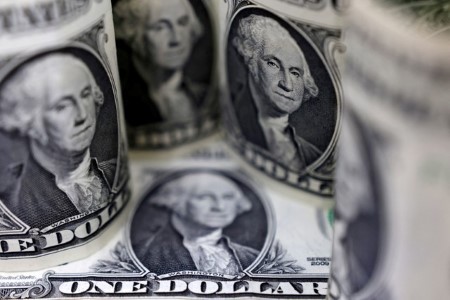




Philippines Trade Update: Trade trajectories trend along
 DOWNLOAD
DOWNLOAD

Policy Rate Updates: Double cut finale
 DOWNLOAD
DOWNLOAD

Monthly Economic Update: One for the road
 DOWNLOAD
DOWNLOAD


US dollar posts steep gains as investors brace for non-farm payrolls

NEW YORK, Oct 6 (Reuters) – The dollar rose on Thursday, climbing for a second straight session, as investors bet on another strong US non-farm payrolls report that should keep the Federal Reserve on an aggressive tightening path for some time.
The dollar index, which measures the greenback against a basket of currencies, surged more than 1% to 112.22 and was up about 17% for the year so far.
“The dollar is on a roll again as stocks slump and recession fears hammer European currencies,” said Joe Manimbo, senior market analyst, at payments company Convera in Washington.
“The buck’s pop also reflects the market betting on another solid jobs report that reinforces the Fed’s hawkish rate path.”
US non-farm payrolls for September are due to be released on Friday, with economists forecasting a headline print of 250,000 new jobs, compared with 315,000 in August.
Chicago Fed President Charles Evans on Thursday said the Fed’s policy rate is likely headed to 4.5%-4.75% by the spring of 2023 as the Fed increases borrowing costs to bring down too-high inflation.
The euro was down 0.9% against the dollar at USD 0.9794, earlier falling after the release of European Central Bank minutes from last month’s meeting that showed policymakers were worried that inflation could get stuck at exceptionally high levels.
Separately, a source told Reuters on Thursday, citing provisional figures, that the German government expects Europe’s largest economy to slide into recession next year, contracting 0.4% as an energy crisis, rising prices and supply bottlenecks take their toll.
Sterling was down 1.5% versus the dollar at USD 1.1151. The euro also firmed against the pound, up 0.7% at 87.83 pence.
Against the yen, the dollar rose 0.3% to 145.05. It hit a session high of 145.135, not far from a 24-year peak of 145.90 yen touched on Sept. 22, which triggered a yen-buying intervention from Japanese authorities.
Against the Swiss franc, the dollar rose 0.8% to 0.9906 francs.
Currency markets have struggled to find a clear direction this week, following a dramatic third quarter. The dollar initially slid against most majors, before regaining ground.
“It’s the calm before the storm – the non-farm payrolls storm,” said Edward Moya, senior market analyst at OANDA in New York.
“Everyone knows the Fed has been consistent with their messaging. The Fed is not done bringing down inflation, and they are locked into this aggressive rate-hiking campaign that will only change once we start to see inflation come down.”
A major factor driving currency markets currently has been changing expectations of how aggressively central banks’ – particularly the Fed – will raise interest rates.
A key question is whether policymakers will pivot from primarily worrying about inflation to also considering slowing economic growth, and possibly leading to more cautious interest rate hikes.
US inflation data next week will be closely watched.
US benchmark Treasury yields whose recent gains had helped drive the greenback higher, were up about 6 basis points at 3.8175%.
The Australian dollar was down 1.12% against the greenback at USD 0.6412, still struggling after an unexpectedly modest 25 bp hike in Australia.
The US dollar was up 0.9% against the Canadian dollar at C$ 1.3743
(Reporting by Caroline Valetkevitch and Gertrude Chavez-Dreyfuss; Additional reporting by Alun John in London and Tom Westbrook in Singapore; Editing by Nick Zieminski and Alistair Bell)
This article originally appeared on reuters.com





 By Reuters
By Reuters